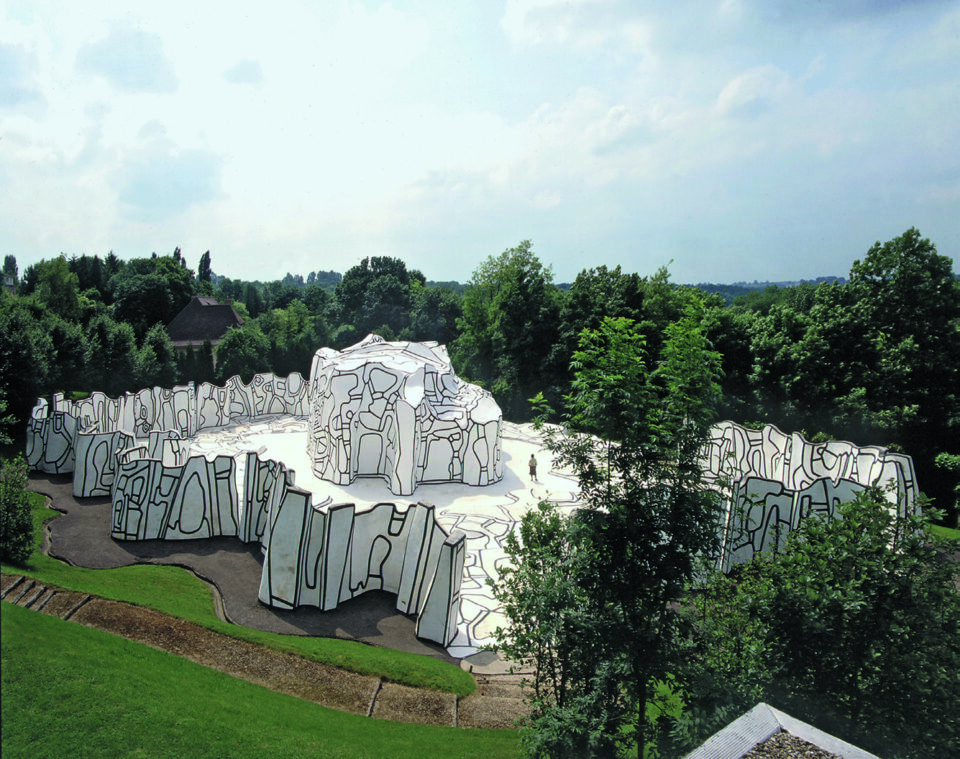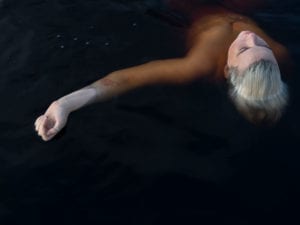Amy Dempsey’s Destination Art, a new book from Thames and Hudson, offers an immersive journey through landscapes across the world – brought to life through site-specific artworks. You might think that the story would start in the 1960s, with the rise of Land Art in North America and Europe. But this volume traces the roots of what the author calls “Destination Art” – art that could not exist except within, and as part of, a particular physical environment – further back, to the late 19th century, and to the small village of Hauterives, in the Rhône Valley in south-eastern France. It was there that a country postman, Ferdinand Cheval, began converting his garden into a magical palace of architectural follies. Inspired by the far-away locations he had glimpsed on postcards, and by the long solitary hours of his delivery routes, he started crafting towers, turrets, archways and columns with wire mesh, covering them with wet cement and lime and pressing into them an array of stones, fossils and shells that had caught his eye on his rounds.

Le Palais Idéal (“The Ideal Palace”), as Cheval’s creation came to be known, fronts the opening section of the book, Personal Visions and the Rise of Land Art. The paradigm established in this chapter is close to that of outsider art: created by individuals often removed culturally and geographically from any particular “art scene.” The Watts Towers in Los Angeles, dreamt up by Italian immigrant labourer Simon Rodia, and Nek Chand’s spectacular Rock Garden in Chandigarh, India, are amongst the examples of this genre. But it’s striking to see everything from Mount Rushmore to Gaudí’s Parc Güell included.
It’s almost a surprise when names such as Michael Heizer, Jean Tinguely and Ian Hamilton Finlay start popping up, indicating practices developed with a far clearer awareness of their relationship to the cultural zeitgeist. At the same time, there’s an undeniable thread of influence leading from the outside to the inside of the art world, with some of these more storied figures expressing their debt to pioneers such as Cheval or Rodia. Jean Dubuffet, whose Art Brut philosophy provided the first clear context for appraising the artworks of non-artists – though the Surrealists pre-empted him – is represented in the strange, cartoonish boulders and battlements of Closerie Falbala.
Dempsey’s second section, Monumental Art and the Environment, transports us to the more familiar and iconic locations of 20th -century land art: from the dry salt lake of Robert Smithson’s Spiral Jetty (1970) to the New Mexico desert of Walter De Maria’s Lightning Field (1977), a mile-wide grid of stainless steel poles needle tipped to conduct lightning against an amphitheatre-like mountain backdrop. Newer and still more far-flung sites are traversed along the way. Hannsjörg Voth’s angular geometrical earthworks jut from the red sands of south-east Morocco like alien temples, whilst at Land Art Flevoland in Holland, art intersects with engineering against a vast, dreamily flat horizon.
Destination Art “Comes of Age” in Dempsey’s third chapter, with the number of sculpture and art parks multiplying globally from the 1990s onwards. Her final collection of sites, Destination Art Around the World pulls focus – to some extent – away from Europe and the west. We are whisked across almost every continent, from the Onjuva Marble Quarry in Namibia, site of British sculptor Julie Brook’s beautifully crisp dry-stone constructions, to the Inhotim Botanical Gardens in Brazil, with their centrepiece of multi-coloured geometric slabs designed by concrete artist Hélio Oiticica. The Benesse Art Site project has peppered sculptures along the beaches and cliffs of the tiny Japanese island of Naoshima, gradually spreading across neighbouring islands, creating an archipelago of site-specific creation. Amongst those featured is one of Yayoi Kusama’s iconic pumpkins.

The appeal of these works generally derives from a sense of awe, in the same way that any grand, remote human-made structure would catch the breath. They tend to draw much of their power from their setting – almost always a natural one – giving back to the forest, plains, mountains, deserts or lakes. They are not religious spaces, but often invite the visitor into a kind of reverential encounter with the three-dimensional world, casting a veil of mystery.
In an era of increasingly ubiquitous digital interfaces with art and nature, it is hard to imagine the appeal of Destination Art diminishing any time soon. The projects showcased in this book offer us the chance of immersive, multi-sensory encounters with place, of a kind that will have an increasingly rare and precious appeal.
Find out more here.
Words: Greg Thomas
Image Credits:
1. Courtesy the artist. Mikael Hansen, Organic Highway, 1995, re-established in 2002 and 2011. Sycamore branches, length 60 m (196 ft10 in.)
2. Photo: Gunhild Lien. Stuart Ian Frost, A Place Is a Place Is a Place, 2019. Douglas fir, 300 x 303 x333 cm (9 ft 10 in. x 9 ft11 in. x 10 ft 11 in)
3. Photo: CDS Images/Alamy Stock Photo. Simon Rodia, Watts Towers, 1921-54. Los Angeles. Concrete, bottles, cups,glass, tile, shells, steel, wire mesh, 1⁄₁₀ of an acre, height of the tallest tower is 99 ½ ft.
4. Photo: Kevin O’Dwyer. Kevin O’Dwyer, 60 Degrees, 2002. Railway sleepers, stainless steel, steel, rail, height 5 m (16 ft 5 in.)
5. Fondation Dubuffet, Périgny-sur-Yerres. Photo Belzeaux. © ADAGP, Paris and DACS, London 2020. Jean Dubuffet, Closerie Falbala, 1970–73 Painted concrete andepoxy resin, 1,610 m2(17,330 ft2).







